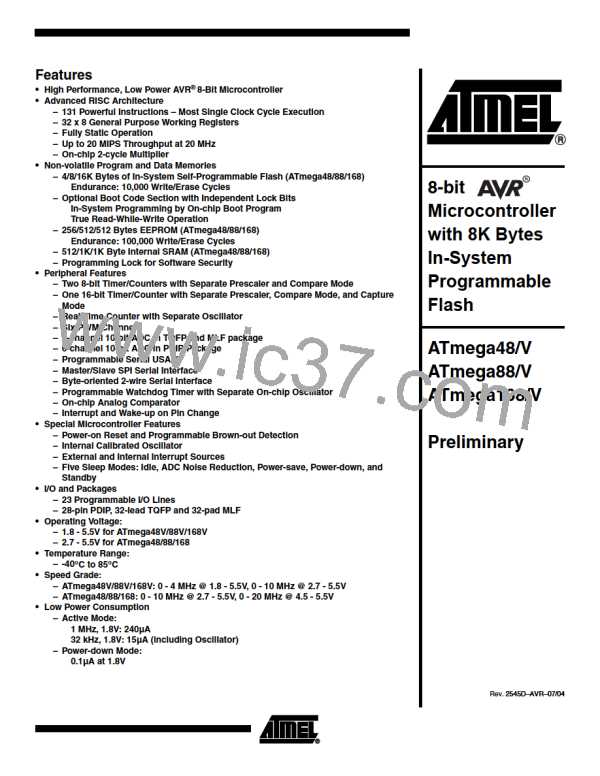ATmega48/88/168
described later on. However, it is important that the TWINT bit is set in the value
written. Writing a one to TWINT clears the flag. The TWI will not start any opera-
tion as long as the TWINT bit in TWCR is set. Immediately after the application
has cleared TWINT, the TWI will initiate transmission of the data packet.
6. When the data packet has been transmitted, the TWINT Flag in TWCR is set,
and TWSR is updated with a status code indicating that the data packet has suc-
cessfully been sent. The status code will also reflect whether a Slave
acknowledged the packet or not.
7. The application software should now examine the value of TWSR, to make sure
that the data packet was successfully transmitted, and that the value of the ACK
bit was as expected. If TWSR indicates otherwise, the application software might
take some special action, like calling an error routine. Assuming that the status
code is as expected, the application must write a specific value to TWCR,
instructing the TWI hardware to transmit a STOP condition. Which value to write
is described later on. However, it is important that the TWINT bit is set in the
value written. Writing a one to TWINT clears the flag. The TWI will not start any
operation as long as the TWINT bit in TWCR is set. Immediately after the appli-
cation has cleared TWINT, the TWI will initiate transmission of the STOP
condition. Note that TWINT is NOT set after a STOP condition has been sent.
Even though this example is simple, it shows the principles involved in all TWI transmis-
sions. These can be summarized as follows:
•
When the TWI has finished an operation and expects application response, the
TWINT Flag is set. The SCL line is pulled low until TWINT is cleared.
•
When the TWINT Flag is set, the user must update all TWI Registers with the value
relevant for the next TWI bus cycle. As an example, TWDR must be loaded with the
value to be transmitted in the next bus cycle.
•
After all TWI Register updates and other pending application software tasks have
been completed, TWCR is written. When writing TWCR, the TWINT bit should be
set. Writing a one to TWINT clears the flag. The TWI will then commence executing
whatever operation was specified by the TWCR setting.
In the following an assembly and C implementation of the example is given. Note that
the code below assumes that several definitions have been made, for example by using
include-files.
211
2545D–AVR–07/04

 ATMEL [ ATMEL ]
ATMEL [ ATMEL ]